Many people look to combine camping holidays with astronomical pursuits. But how do you get the most out of the experience? There are lots of dark sky places across the UK and Ireland that actively promote stargazing.
Many are in National Parks and Areas of Outstanding Natural Beauty, so you’ll have plenty of scope to find a suitable campsite.
A visit to darkskydiscovery.org.uk is a good place to start to find more information.
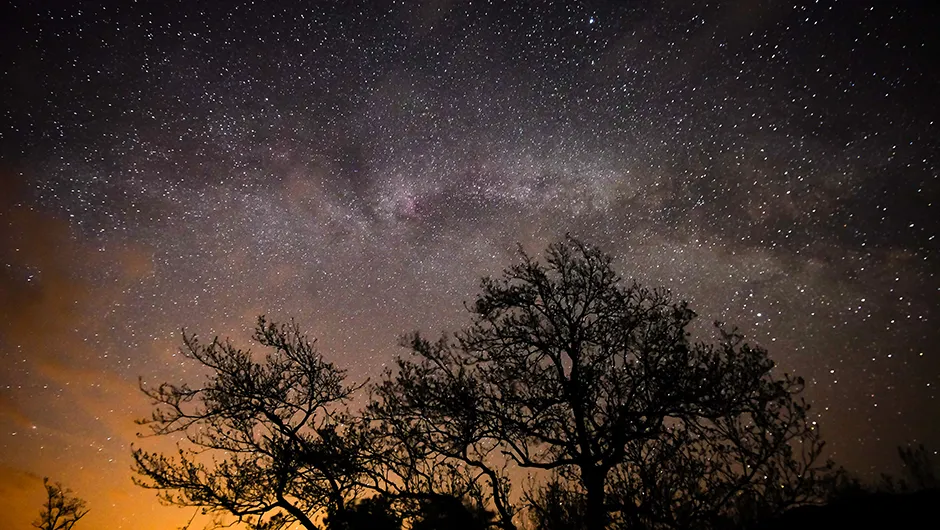
The nature of camping means many of these sites are located in ideal places that are situated well away from built-up, well-lit areas.
You need a lack of street lamps and lights on the campsite so you're not plagued by light pollution, and a good view of the heavens with no (or at least limited) obstruction from buildings and trees.
Talk with the management to make sure you are situated away from people who may get annoyed with you being up all night.
Think about security and ask if there secure areas on site for locking your equipment away during the day, as a tent is not adequate protection against thieves.
Of course, you'll need a good compact, portable telescope. For inspiration, read our guide to the best travel telescopes for astronomy.
Where to pitch your tent
It’s a good idea to find a campsite in or around a dark sky place. Visit www.darksky.org for a list of sites beyond the UK and Ireland.
England
1 Bodmin Moor Dark Sky Landscape;2 Exmoor Dark Sky Reserve;3 Northumberland Dark Sky Park;4 South Downs Dark Sky Reserve
Scotland
5 Galloway Forest Dark Sky Park;6 Coll Dark Sky Community;7 Moffat Dark Sky Community;8 Cairngorms Dark Sky Park
Wales
9 Elan Valley Dark Sky Park;10 Brecon Breacons Dark Sky Reserve;11 Snowdonia Dark Sky Reserve
Ireland
12 Kerry Dark Sky Reserve;13 Mayo Dark Sky Park
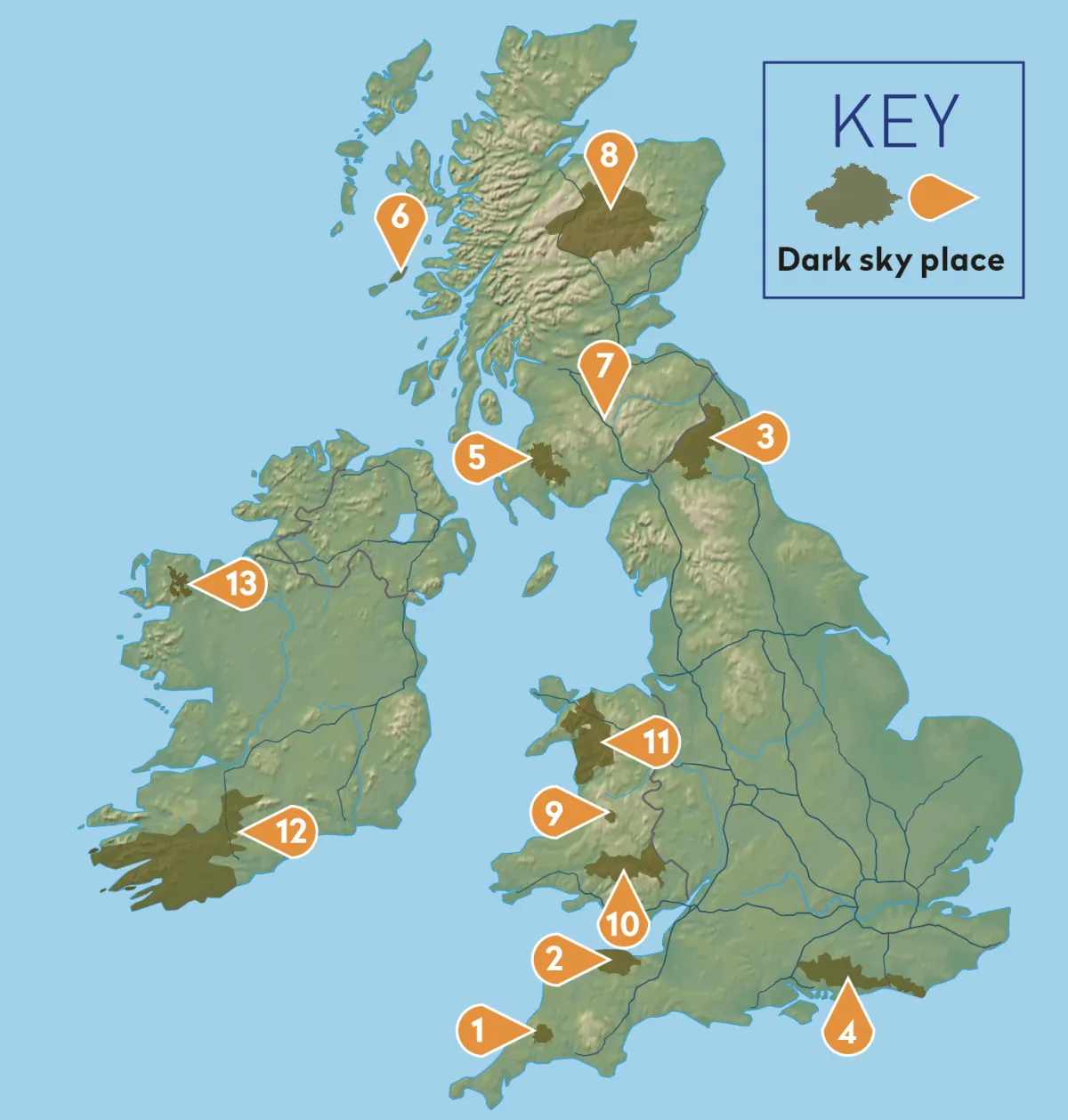
Are you going to do visual astronomy, or nightscape or telescope astrophotography?
For visual observing with a simple Dobsonian telescope or binoculars – or for nightscape astrophotography with a DSLR – no power is required and you can be up and running in minutes.
With any powered telescope you will need a power supply.
Some sites may have electric hook-ups; otherwise a portable power tank is the answer, such as the Sky-Watcher/Celestron PowerTank 17Ah.
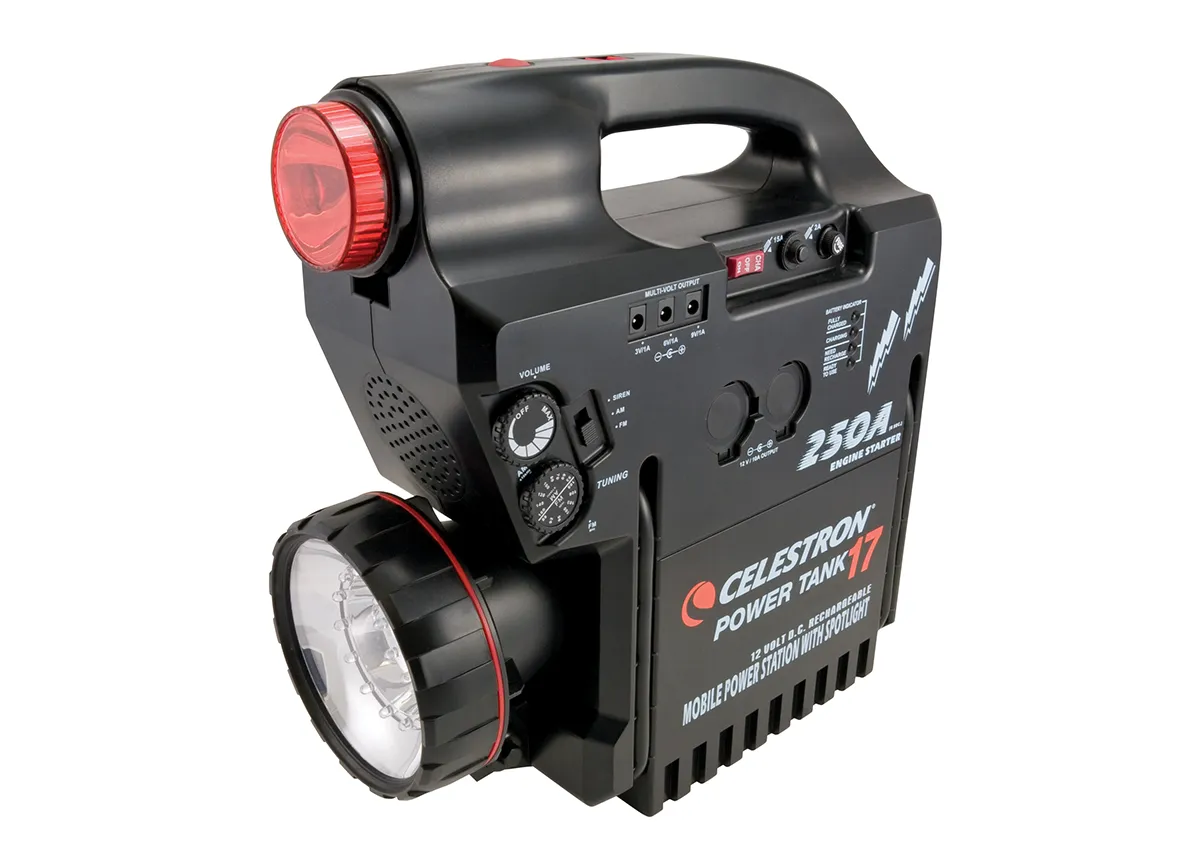
If you are staying for several days, you will need to consider the availability of re-charging facilities.
Once you have selected a camping area, you’ll need to decide what to take. Always bring the least amount of equipment to get the job done.
Carbon fibre telescopes like the Explore Scientific ED APO 102mm refractor are a great option, because you can use a smaller mount as the gear is not too heavy.
Reflective covers will help keep your telescope as cool as possible during the day.
TS-Optics have a range in different sizes, but there are many kinds available on the market.
Select a cover that ties tightly at the bottom.
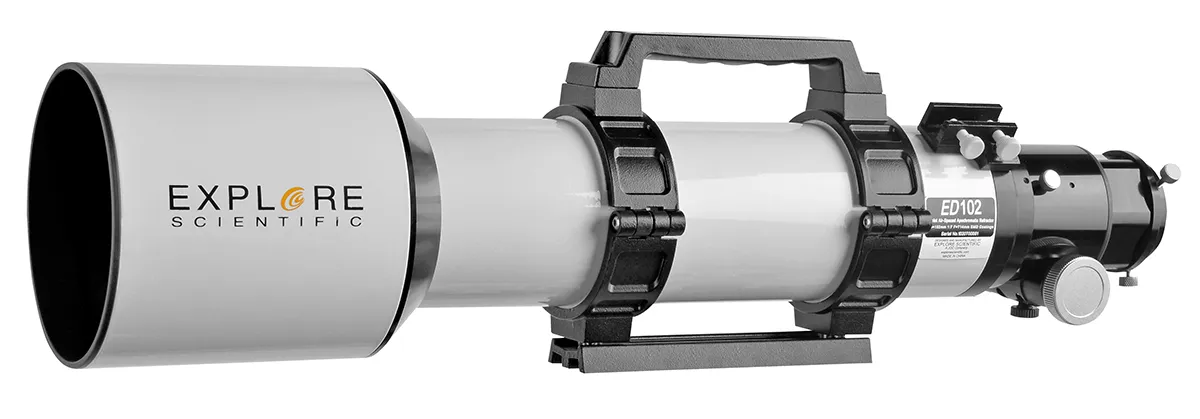
What sort of tent is best for astronomy camping trips?
If you’re really serious about astro camping, the luxury option is an observatory tent.These have a removable roof, allowing the telescope access to the night sky.
The Kendrick Stargate II is a good example and will give you an idea of what to look out for when you come to select your own.
If you just want to naked-eye stargaze then an inflatable bubble tent is a great option.
Make sure that your tents are fitted and erected correctly as they can become like kites in strong gusts of wind, your prized telescope with them.
Think about some waterproof flooring – padding where possible, or even just a beach towel – as this will reduce dew from damp grass and protect any equipment that you might drop.
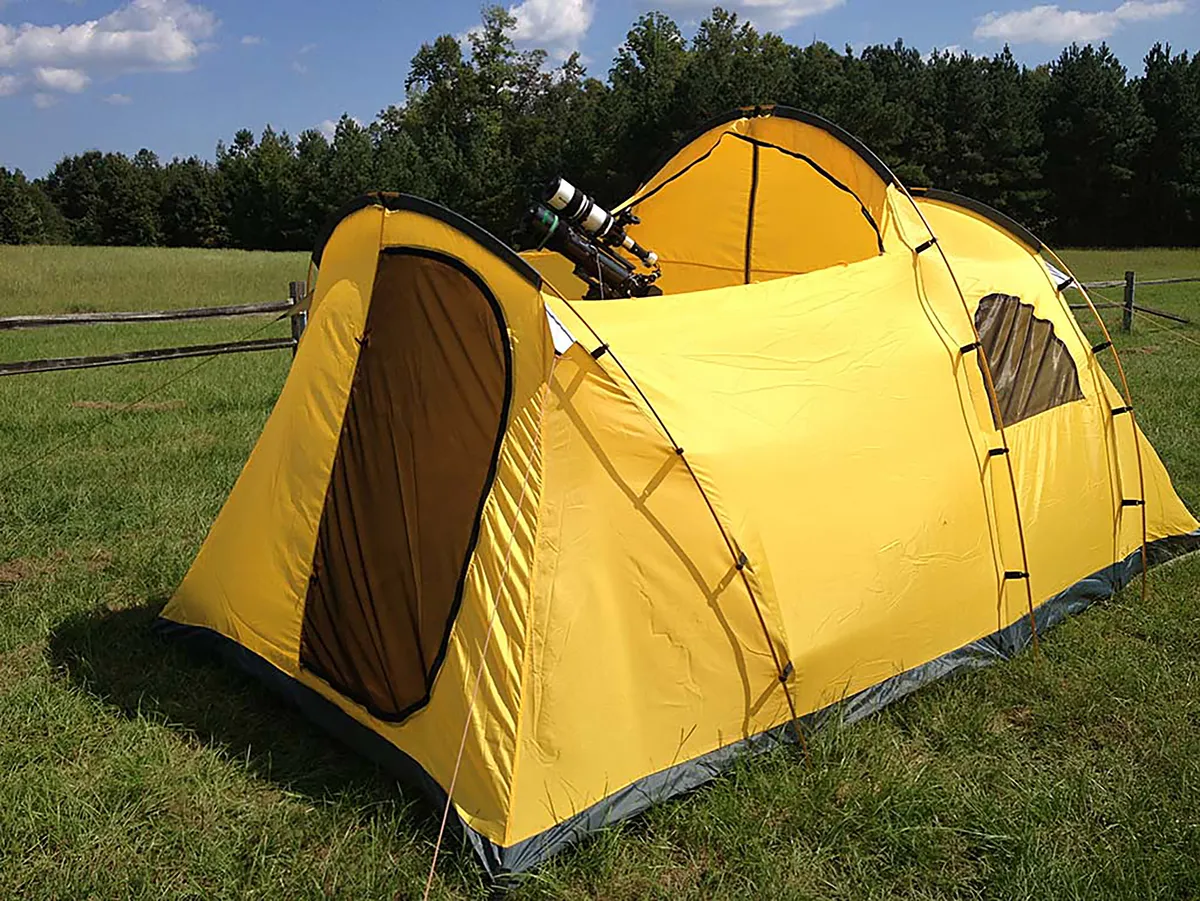
A 12V hair dryer or dew heater for your telescope is a good idea: Astrozap makes a range of dew heaters suitable for different sizes of scope.
You'll also need a lens cleaner and cloth to clean optics that have been dirtied by dewing or dust in windy conditions.
Baader make cleaning fluid and cloths that do the job nicely.
A red torch is also a necessity, as white light will interfere with your eyes' dark adaptation, as is a set of tools for adjusting or tightening your scope setup.
Smartphones can provide star chart apps and are useful in case an emergency arises.
You’ll also need an observing chair like the Sky-Watcher anti-tip observing chair, and a small foldable camping table for accessories; preferably with compartments for holding small pieces of kit together.
It goes without saying that you should bring warm clothes, especially for winter camping.
There are many hand warmers and astronomers’ gloves on the market, and army surplus stores can be good for picking up a heated flying suit – a great accessory for cold weather.
But, above all else, enjoy the experience; you may be rewarded with some spectacular discoveries.
Peter Williamson is an organiser of the annual Solarsphere star party in Builth Wells, Wales.